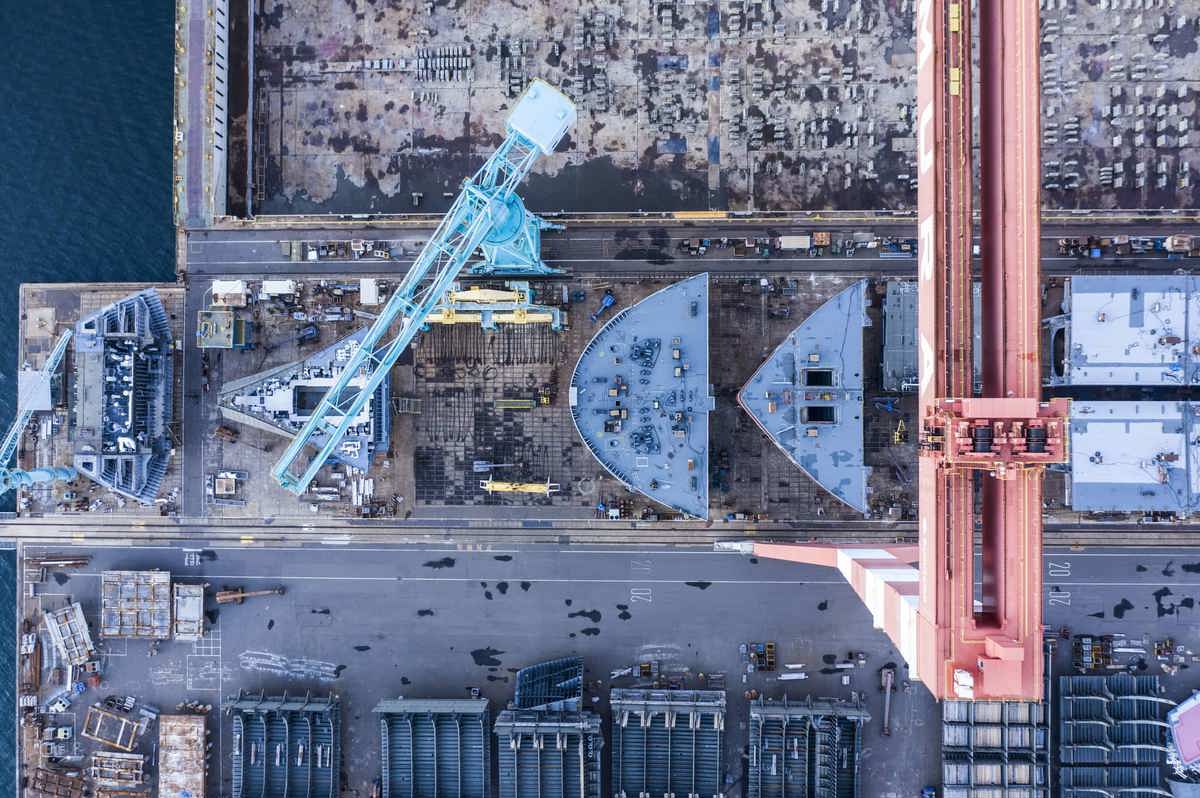The Week in Alt Fuels: What’s in the name?
Alternative-fuel vessel orders become more than just data points on a spreadsheet when we see who’s placing them. That's when the shift really begins to feel tangible.
 IMAGE: Top view of a ship being constructed at a shipyard. Getty Images
IMAGE: Top view of a ship being constructed at a shipyard. Getty Images
Shipping’s green fuel transition had long been in a deadlock.
Shipowners wanted fuel availability to place ship orders. Fuel producers wanted guaranteed demand before scaling up. Infrastructure developers looked to regulations before investing. Everyone waited for someone else to move first.
But now that dynamic is starting to shift. Some big shipowners have placed vessel orders and locked in supply deals, signalling that it doesn’t hurt to be ready for whatever the future throws at them.
Mitsui O.S.K. Lines (MOL) expects to deploy a combination of 90 LNG- and methanol-capable vessels by 2030. It has also teamed up with Belgian shipping company CMB Tech to order nine ammonia-capable bulk carriers and chemical tankers.
Hapag-Lloyd has 12 LNG-capable ships already in service and another 24 newbuilds on order, all with “ammonia-ready” notations, for delivery towards 2029. It also has five methanol retrofits planned by 2026.
Maersk plans to introduce 19 methanol-capable ships this year alone. It has also ordered 20 LNG-capable vessels, with the first deliveries expected in 2028.
CMA CGM is following suit and wants to deploy 12 methanol dual-fuel vessels by 2026. It also intends to take its LNG-capable fleet up to 123 by 2029, with at least 24 more dual-fuel LNG ships on order for delivery next year.
China’s COSCO Shipping has ordered at least 12 methanol-capable and 10 ammonia- and methanol-ready container ships. It also plans to retrofit another eight for methanol.
Yang Ming has six methanol-capable ships and seven LNG-capable dual-fuel vessels on order, all for deliveries between 2028 and 2030. Pacific Basin has ordered four methanol-capable vessels for delivery between 2028 and 2029.
These are just some of the many companies that have invested in alternative bunker fuels. But knowing who’s ordering what gives this transition more weight.
We talk a lot about future-fuelled vessels in numbers: 371 methanol-capable newbuilds, 39 ammonia-capable and 631 LNG-capable ships on order through 2033. 771 LNG- and 70 methanol-capable ships in operation today.
These faceless figures can feel detached and ambiguous.
Names, on the other hand, can bring the data to life and create credibility. They have the power to turn abstract into tangible.
"Demand is coming" becomes Maersk wants methanol. Hapag-Lloyd wants methane. MOL wants ammonia.
That kind of specificity tells us exactly who’s building what, when and for which fuel, allowing fuel producers, suppliers and ports to plan infrastructure, offtake and logistics. It also makes it easier for smaller shipping companies to anchor their own strategies to the moves of early movers.
Company strategies differ, but their outlooks are aligned. These companies aren’t pledging allegiance to a single fuel. They’re future-proofing – testing what’s viable, locking in optionality, hedging compliance costs and signalling that the market is ready to scale when the right conditions fall into place.
And they’re backing these fleet decisions with fuel arrangements.
Maersk has signed multiple offtake agreements for green methanol. Hapag-Lloyd will procure 250,000 mt/year of green methanol from one supplier. MOL is working with India’s ACME Group to explore green ammonia supply from planned projects in Odisha and Tamil Nadu.
CMA CGM has partnered with TotalEnergies to secure 360,000 mt/year of LNG for its fleet from 2028 to 2040. It also plans to offtake biomethanol output from Shanghai Electric’s upcoming plant.
Pacific Basin has signed a memorandum of understanding with Towngas to supply bio-methanol for its dual-fuel fleet upon delivery, its second such deal after a 2024 agreement with Japan’s Mitsui & Co.
Supply agreements can help fuel producers and infrastructure developers to scale with more confidence.
This narrative isn’t about crowning climate heroes or early-mover champions. It’s about action, seeing who’s doing what and how those moves are starting to add up towards progress.
And perhaps that’s what will make it easier to navigate the vast, uncertain waters of the green fuel transition.
In other news this week, India’s Directorate General of Shipping (DGS) has issued new guidelines for bunker blends with up to 30% biofuel (B30). The rules will apply to all types of bunkering operations, including truck-to-ship, terminal-to-ship and ship-to-ship, across all Indian ports, anchorages and offshore bunker facilities.
US Congress representatives Laurel Lee and August Pfluger have introduced a bill to reduce "regulatory burdens" on LNG bunkering in the country. The new bill states that ship-to-ship transfers of LNG used as marine fuel are not considered exports under the US Natural Gas Act, unless the transfers take place in international waters. It has been referred to the House Committee on Energy and Commerce.
Dutch bunker supplier Titan Clean Fuels has delivered an undisclosed amount of LNG to the Ritz-Carlton Yacht Collection’s superyacht at the Cruise Port Terminal, Amsterdam. The vessel Ilma received fuel through a ship-to-ship bunker operation using the LNG bunker tanker FlexFueler 001.
By Konica Bhatt
Please get in touch with comments or additional info to news@engine.online





